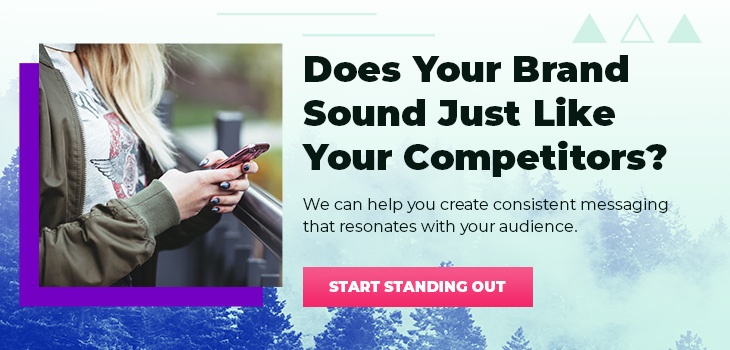B2B is a big space filled with numerous niches and industries. So although blogs and guides about marketing for B2B can be helpful, they likely skip over some of the unique challenges that your EdTech business faces.
One thing that truly sets EdTech apart from other industries is passion. Your clients — teachers, administrators and school districts — are driven by the desire to make kids’ lives better through engaging education. In fact, your company is probably driven by the exact same desire! You want to help kids learn and develop themselves so they can be happy, productive adults one day.
This is what makes EdTech special, and it can’t be overlooked in your marketing. Part of building relationships with potential customers is making those emotional connections and showing you’re aligned with what matters most to them.
Today, we’re going to teach you how to do just that. We’re laying out four different marketing strategies that allow you to showcase your B2B EdTech business in a way that resonates with and engages your target audience. We’ll look at techniques that address common sales challenges, such as:
- Building brand awareness
- Demonstrating value
- Reaching decision makers and getting teacher buy in
- Navigating a long sales cycle
With the right mix of marketing efforts, none of these problems have to slow down your sales team. Let’s dive in and start planning the elements of your next great marketing strategy!
Problem #1: Brand Awareness
Teachers and administrators are busy people, which means they need to find solutions fast. However, sometimes they aren’t even sure where to start their search. They might know what their problem is but feel unsure of how to solve it or they may question that there is a solution.
This can create unique challenges to building brand awareness in the EdTech industry. It often leads to broad search queries which turn up dozens of potential solutions, likely from your competitors.
So how do you get your brand to stand out? With highly engaging content that directly addresses the way they phrase their pain point.
Engaging content not only captures users’ attention quickly, it clearly and positions your brand as an empathetic authority on the subject. Teachers and administrators are inundated with information every day, so your content needs to immediately stand out and establish a connection with them.
That’s why we recommend going beyond blogs and social posts to the most engaging form of content — video.
Solution: Video Marketing
EdTech businesses can uniquely benefit from using video marketing. It grabs potential customers’ attention right away and allows you to establish a connection with them early in their buyer’s journey.
With video, you can easily tell a story — empathizing with your audience’s struggle, aligning with their core goals and showing how your product makes their lives better — in one piece of content.
It also provides the opportunity to show the impact of your platform and how it works. Take viewers on a walkthrough of your features to demonstrate how your platform makes their lives easier. You can even add testimonials from teachers who currently use your product in their classroom.
What’s more, videos are easy to share and repurpose in multiple marketing channels. You can add videos to your website, social media channels and even emails. Plus, you can include a shareable link so teachers and administrators can share them with the decision makers in their organization. This helps you not only create brand awareness but also start to garner buy-in from the right people.
Most importantly, video can create a relationship with the user that will build momentum towards reaching key decision makers.
Problem #2: Demonstrating Value
It’s no secret that many schools and school districts are on tight budgets. Despite knowing and finding the solution they need to help their students learn, some schools still might hesitate to spend on eLearning tools. For EdTech companies, this means going beyond providing a solution to clearly demonstrating the value of your product.
Decision makers need to know that they’ll see concrete benefits from implementing eLearning products in their classrooms. That might be:
- More engagement from learners
- Saving teachers time
- Improving efficiencies in administration
- And more
What constitutes value will depend on the organization and problem you’re solving for. No matter what it is, however, you’ll struggle to prove this value if you don’t have an established, coordinated way to discuss your product with your target audience.
Solution: Messaging Strategy
Enter your messaging strategy. A messaging strategy helps you define not only how you position your product but also how people will perceive your product. It hones your client communication so that every interaction — whether it’s an email from sales, a social media advertisement or a helpful guide on your blog — conveys the same message.
There are three primary elements to any great messaging strategy:
- The problem — What problem is your audience facing? What brought them to your website?
- The solution — How does your product solve this problem?
- The results — What will their life look like after they start using your product? This is where you can really demonstrate value!
If you’re new to messaging, we recommend creating a StoryBrand Brandscript. The Brandscript helps you understand your audience and clarify your message so there’s no confusion about the value of your product. With that foundation in place, you can easily apply that language and positioning to the rest of your brand.
Problem #3: Reaching Decision-Makers
There’s a distinctive hierarchy in the education industry — educators, administrators, school board members, etc. Each role has a specific function within educational institutions and districts, and each has a part to play in purchasing EdTech solutions.
Although EdTech products can target any level of this hierarchy, many of them strive to make teachers’ lives easier so they can focus on educating their students. However, this comes with a catch. Teachers may be your target customer but they’re not the person who decides whether or not to purchase your product. (That’s up to principals, superintendents and school boards.)
This creates a disparate set of audiences within your target market:
- People who use your product (i.e. teachers)
- People who help implement your product (i.e. administrators or principals)
- People who decide whether to buy your product (i.e. superintendent or school board)
Your website is likely geared toward the group that will be using your product. Your copy resonates with their pain points, demonstrates your solution in context for their role and shows what their life will look like with your product. This is all great!
However, you’re still facing one problem: How do you convince the other audience segments to purchase your product?
Solution: Content Marketing
With my personal favorite marketing strategy: content marketing! Most industries use content marketing to boost brand awareness — and you can still do that — but in EdTech, content can play an even more valuable role.
EdTech companies can use their content to thoroughly educate website users and turn them into champions for their product. With valuable, high-quality content, you can turn any reader into an honorary sales rep within their organization.
Here’s a basic rundown of how this tactic works:
- An educator finds your website and is interested in your product.
- They read your content and learn as much as they can about your product and how it would solve their problem.
- They pitch your product to their boss and can easily send them all the resources they’ve read so the boss can get up to speed.
- Their boss can pass this all along to the decision maker in the school or school district and that person will reach out to your sales team if they’re interested.
The key is to help website visitors feel knowledgeable about your product so they’ll be empowered to present it to their supervisor. Plus, as a bonus, once the decision maker makes it to your sales team, they’ve already had a chance to educate themselves about your product and form specific questions, creating more productive sales conversations.
Problem #4: Long Sales Cycle
Finally, perhaps the trickiest hurdle facing B2B EdTech businesses is an extended sales cycle. There are few things that contribute to this:
- Challenges in reaching the decision maker
- Working within educational institutions’ budgets
- Limited purchasing window each year
Long sales cycles can be a challenge for sales teams because it requires them to keep up with leads over time, continually nurture them and do their best to stay top of mind throughout the school year.
All of this requires a lot of time and effort that could detract from finding and nurturing new leads. Unless, of course, your sales and marketing platform offers automation.
Solution: Automation
Sales and marketing automation is the digital age’s answer to long sales cycles. Automation allows your teams to stay in touch with leads, provide helpful information and keep your brand top of mind all without lifting a finger.
There’s no shortage of helpful automations, but a few of our favorites for sales and marketing include:
- Automated email nurture campaigns
- ABM campaigns
- Sales sequences
- Task reminders
- Automated deal pipeline
With these efforts automated, your team can effortlessly build relationships with leads until they’re ready to purchase — whether that’s in weeks or months. To make things even easier, HubSpot offers all of these features in their user-friendly platform so you can automate everything from a single source of truth.
Use Strategic Solutions to Sales Challenges
A complex industry requires a multifaceted approach to marketing. EdTech businesses should use targeted marketing strategies to overcome the unique challenges facing their sales teams.
To learn more about the tools that can help you execute these strategies, check out our podcast!







